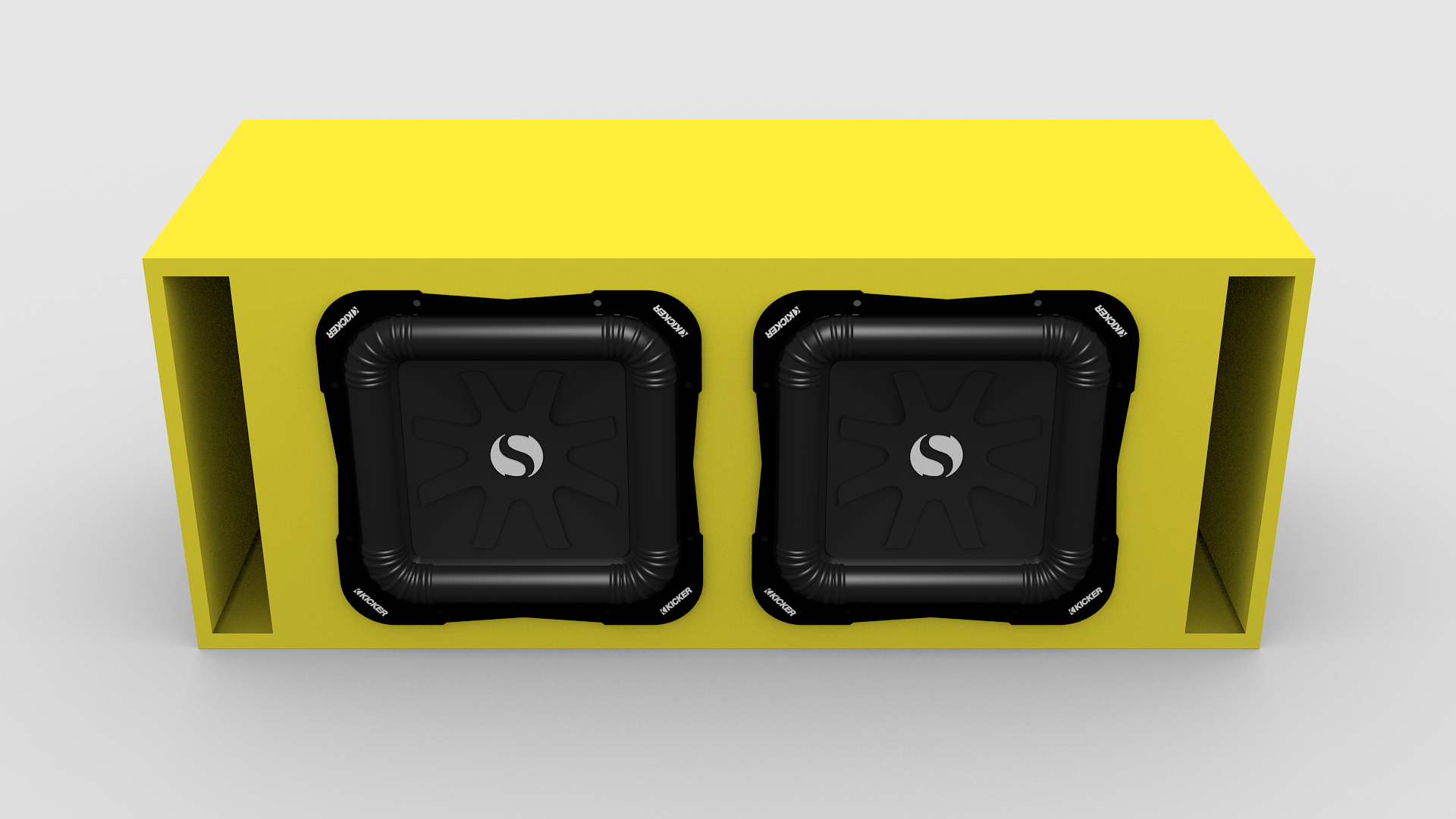Subwoofers are specialized speakers designed to reproduce low-frequency sounds, typically from 20 Hz to 200 Hz. These frequencies are often felt rather than heard, providing a visceral impact that can transform music, movies, and games. Properly setting up a subwoofer involves a combination of placement, connection, calibration, and tuning to achieve optimal performance.
Top Picks
- 10" front-firing spun-copper IMG woofer
- All-digital amplifier with 300 watts peak power
- Volume low pass crossover and phase control
- Line level LFE RCA inputs for maximum receiver compatibility
- Dimensions 14 5" x 12 5" x 16 4"
- Equally impressive with music and movies;Brushed black polymer veneer cabinet with satin painted plinth
- Low pass crossover and phase control
- Line/LFE inputs for compatibility with most receivers
- Equally impressive with music and movies
- Enclosure Type: bass reflex
- Amplifier Type: Class AB
- Amplifier power: 120 watts peak/ 60 watts RMS
- Frequency response: 38hz-200hz; crossover frequency: 40hz-200hz
- Driver: 10" Low Throw dynamic woofer with these inputs: L/R/LFE/speaker level
Importance of a Subwoofer
Subwoofers are essential for creating a full-range audio experience. They handle the bass frequencies that smaller speakers cannot reproduce effectively. By offloading the low-frequency duties to a subwoofer, your main speakers can perform better in the mid and high frequencies, resulting in a clearer and more dynamic sound.
Types of Subwoofers
There are two main types of subwoofers: active (powered) and passive (non-powered). Active subwoofers have built-in amplifiers, while passive subwoofers require an external amplifier. Active subwoofers are more common in home theater and audio setups due to their ease of use and built-in amplification.
Pre-Setup Considerations
Before setting up your subwoofer, there are several important factors to consider, including room size, acoustics, and subwoofer specifications.
Room Size and Acoustics
The size and acoustics of your room play a crucial role in subwoofer performance. Larger rooms may require more powerful subwoofers or multiple subwoofers to achieve the desired bass levels. Room acoustics, including the shape, furniture, and materials, can affect how sound waves travel and interact within the space.
Subwoofer Specifications
Understanding the specifications of your subwoofer is essential for optimal setup. Key specifications include:
- Frequency Response: The range of frequencies the subwoofer can reproduce.
- Power Rating: Measured in watts, this indicates the subwoofer’s power handling capability.
- Driver Size: The diameter of the subwoofer’s driver, typically ranging from 8 inches to 15 inches.
- Enclosure Type: Sealed or ported, which affects the sound characteristics.
Placement Options
Subwoofer placement significantly impacts its performance. Common placement options include:
- Front of the Room: Placing the subwoofer near the front speakers for cohesive sound integration.
- Corner Placement: Placing the subwoofer in a corner to increase bass output due to boundary reinforcement.
- Side Wall Placement: Placing the subwoofer along a side wall for balanced bass distribution.
Step-by-Step Setup Guide
Unboxing and Inspection
- Unboxing: Carefully unbox the subwoofer, ensuring not to damage any components.
- Inspection: Inspect the subwoofer for any physical damage or missing parts. Check the power cable, input/output connections, and the driver.
Placement
- Initial Placement: Start with the subwoofer in the front of the room, near the front speakers.
- Subwoofer Crawl Test: Place the subwoofer in your listening position and play a bass-heavy track. Crawl around the room to find the spot where the bass sounds the best, then place the subwoofer in that location.
- Fine-Tuning Placement: Experiment with small adjustments in placement to find the optimal spot. Pay attention to how the bass integrates with the rest of your speakers.
Connections
- Power Connection: Plug the subwoofer into a power outlet.
- Audio Connection:
- Receiver with Subwoofer Output: Connect the subwoofer to the receiver using an RCA cable from the receiver’s subwoofer output to the subwoofer’s input.
- Receiver without Subwoofer Output: Use speaker-level inputs if your receiver does not have a dedicated subwoofer output.
Calibration
- Receiver Settings: Set your receiver’s speaker settings to recognize the subwoofer. This typically involves setting the subwoofer to “On” or “Yes” in the speaker configuration menu.
- Crossover Frequency: Set the crossover frequency to ensure a smooth transition between your main speakers and the subwoofer. Common crossover settings range from 80 Hz to 120 Hz.
- Phase Adjustment: Adjust the phase control to ensure the subwoofer and main speakers are in sync. This can be done by ear or using a test tone and SPL meter.
Room Correction and EQ
- Automatic Room Correction: Use your receiver’s automatic room correction feature, if available. This process involves placing a microphone in the listening position and running a calibration sequence.
- Manual EQ Adjustment: Fine-tune the subwoofer’s EQ settings manually if necessary. This involves adjusting the subwoofer’s volume, low-pass filter, and other settings to achieve the desired sound.
Testing and Tuning
- Test Tracks: Play a variety of test tracks with different bass frequencies to evaluate the subwoofer’s performance.
- Listening Tests: Listen to music, movies, and other content to ensure the subwoofer integrates well with your system and room acoustics.
- Further Adjustments: Make any necessary adjustments to placement, crossover, phase, and EQ settings based on your listening tests.
Advanced Techniques
Multiple Subwoofers
Using multiple subwoofers can help achieve more even bass distribution and reduce room-related bass issues.
- Placement: Place subwoofers in different locations to minimize bass nulls and peaks.
- Connection: Connect each subwoofer to the receiver’s subwoofer output(s) or use a subwoofer splitter.
- Calibration: Calibrate each subwoofer individually, then as a combined system to ensure cohesive performance.
Room Treatments
Acoustic treatments can help improve subwoofer performance by managing reflections and standing waves.
- Bass Traps: Install bass traps in corners to absorb low-frequency energy and reduce standing waves.
- Absorption Panels: Place absorption panels on walls to control reflections and improve overall sound clarity.
- Diffusion Panels: Use diffusion panels to scatter sound waves and reduce room modes.
Wireless Subwoofer Kits
Wireless subwoofer kits allow for flexible placement without the need for long cable runs.
- Kit Installation: Install the wireless transmitter on the receiver and the wireless receiver on the subwoofer.
- Pairing: Pair the transmitter and receiver following the manufacturer’s instructions.
- Testing: Test the wireless connection to ensure stable performance and no interference.
Subwoofer Isolation
Isolating the subwoofer from the floor can reduce vibrations and improve sound quality.
- Isolation Pads: Place isolation pads or platforms under the subwoofer to decouple it from the floor.
- Testing: Test the subwoofer’s performance with and without isolation to evaluate the difference.
Custom Enclosures
Building a custom subwoofer enclosure can optimize performance for your specific room and needs.
- Design: Design the enclosure based on the subwoofer driver’s specifications and your room’s acoustics.
- Materials: Choose high-quality materials for construction to ensure durability and performance.
- Construction: Build the enclosure, ensuring airtight seals and proper bracing to prevent vibrations.
Troubleshooting
Common Issues
- No Sound from Subwoofer: Check power connections, audio connections, and receiver settings.
- Distorted Sound: Adjust the subwoofer volume and crossover settings. Ensure the subwoofer is not overdriven.
- Boomy Bass: Experiment with placement and EQ settings to reduce excessive bass resonance.
Advanced Troubleshooting
- Interference: Check for wireless interference if using a wireless subwoofer kit. Change the wireless channel if necessary.
- Phase Issues: Re-adjust the phase control or experiment with subwoofer placement to resolve phase cancellation.
- Room Modes: Use room correction software or manual EQ adjustments to address problematic room modes.
Maintenance and Care
Regular Maintenance
- Cleaning: Regularly clean the subwoofer’s exterior and driver with a soft, dry cloth.
- Inspections: Periodically inspect the subwoofer for any signs of wear or damage.
Long-Term Care
- Avoid Overdriving: Do not exceed the subwoofer’s power rating to prevent damage.
- Environment: Keep the subwoofer in a stable, temperature-controlled environment to avoid damage from extreme conditions.
What is the purpose of a subwoofer in a sound system?
A subwoofer is designed to reproduce low-frequency sounds, typically between 20 Hz and 200 Hz. These frequencies are often felt rather than heard, adding depth and impact to music, movies, and games. The subwoofer enhances the overall audio experience by handling the bass frequencies that smaller speakers cannot effectively reproduce.
How do I determine the best placement for my subwoofer?
The best placement for a subwoofer depends on your room’s acoustics and layout. A common method is the “subwoofer crawl,” where you place the subwoofer in your listening position, play a bass-heavy track, and move around the room to find the spot where the bass sounds the best. Once found, place the subwoofer in that location.
Can I use multiple subwoofers in my setup?
Yes, using multiple subwoofers can improve bass distribution and reduce room-related bass issues. Place subwoofers in different locations to minimize bass nulls and peaks, and calibrate each subwoofer individually before integrating them into your system.
What is the difference between an active and passive subwoofer?
An active subwoofer has a built-in amplifier, while a passive subwoofer requires an external amplifier. Active subwoofers are more common in home theater and audio setups due to their ease of use and built-in amplification.
How do I connect my subwoofer to my receiver?
If your receiver has a subwoofer output, connect it to the subwoofer using an RCA cable. If your receiver does not have a subwoofer output, use speaker-level inputs on the subwoofer.
What is the crossover frequency and how should I set it?
The crossover frequency is the point where the subwoofer takes over from the main speakers in reproducing low-frequency sounds. Common settings range from 80 Hz to 120 Hz. Set the crossover to ensure a smooth transition between your main speakers and the subwoofer.
How do I adjust the phase control on my subwoofer?
The phase control ensures the subwoofer’s sound waves align with those of your main speakers. Adjust the phase by ear, using test tones or bass-heavy music, until the bass sounds full and integrated with the rest of your speakers.
Do I need to calibrate my subwoofer?
Yes, calibration ensures your subwoofer integrates well with your system and room acoustics. Use your receiver’s automatic room correction feature if available, or manually adjust the subwoofer’s volume, crossover, and phase settings.
Can I use a wireless subwoofer kit?
Yes, wireless subwoofer kits allow for flexible placement without long cable runs. Install the wireless transmitter on the receiver and the wireless receiver on the subwoofer, then pair them following the manufacturer’s instructions.
How can I reduce vibrations from my subwoofer?
Use isolation pads or platforms under the subwoofer to decouple it from the floor, reducing vibrations and improving sound quality.
What is the subwoofer crawl test?
The subwoofer crawl test involves placing the subwoofer in your listening position, playing a bass-heavy track, and moving around the room to find the spot where the bass sounds the best. Place the subwoofer in that location for optimal performance.
How do I clean and maintain my subwoofer?
Regularly clean the subwoofer’s exterior and driver with a soft, dry cloth. Periodically inspect for signs of wear or damage, and avoid exceeding the subwoofer’s power rating to prevent damage.
What are bass traps and do I need them?
Bass traps are acoustic treatments that absorb low-frequency energy and reduce standing waves in a room. They can improve subwoofer performance by managing reflections and standing waves, especially in corners.
Can I build a custom subwoofer enclosure?
Yes, building a custom subwoofer enclosure can optimize performance for your specific room and needs. Design the enclosure based on the subwoofer driver’s specifications and your room’s acoustics, and use high-quality materials for construction.
What are room modes and how do they affect subwoofer performance?
Room modes are resonances that occur at specific frequencies in a room, causing peaks and nulls in the bass response. Use room correction software or manual EQ adjustments to address problematic room modes.
How do I use room correction software?
Room correction software, such as REW (Room EQ Wizard), analyzes your room’s acoustics and generates EQ settings to optimize sound. Follow the software’s instructions for setup and calibration, using a calibration microphone to measure the room’s response.
What is the benefit of a ported vs. sealed subwoofer enclosure?
Ported enclosures are designed to enhance low-frequency output and can produce louder bass at certain frequencies. Sealed enclosures provide tighter, more accurate bass but may require more power to achieve the same output level as ported enclosures.
How do I avoid overdriving my subwoofer?
Avoid exceeding the subwoofer’s power rating and keep the volume at a reasonable level. Overdriving can cause distortion and damage to the subwoofer.
What are the signs of a damaged subwoofer?
Signs of a damaged subwoofer include distorted sound, rattling noises, and no sound output. Inspect the subwoofer for physical damage and check connections and settings.
Can I use a subwoofer with a soundbar?
Yes, many soundbars have subwoofer outputs or are compatible with wireless subwoofers. Connect the subwoofer to the soundbar following the manufacturer’s instructions.
How do I integrate a subwoofer into a stereo music system?
Connect the subwoofer to your stereo receiver’s subwoofer output or use speaker-level inputs. Adjust the subwoofer’s crossover and volume settings to blend seamlessly with your stereo speakers.
What is the difference between a subwoofer and a woofer?
A subwoofer is designed to reproduce very low frequencies (20 Hz to 200 Hz), while a woofer handles a broader range of low to mid frequencies (typically up to 2 kHz). Subwoofers are specialized for deep bass, while woofers cover a wider frequency range.
How do I choose the right subwoofer for my room?
Consider your room size, acoustics, and listening preferences. Larger rooms may require more powerful subwoofers or multiple subwoofers. Check the subwoofer’s specifications, such as frequency response and power rating, to ensure it meets your needs.
What are the benefits of using a subwoofer in a home theater system?
A subwoofer enhances the home theater experience by reproducing deep bass frequencies, adding impact to movie soundtracks, and providing a more immersive audio experience. It allows main speakers to focus on mid and high frequencies, improving overall sound clarity.
How do I test my subwoofer’s performance?
Play a variety of test tracks with different bass frequencies to evaluate the subwoofer’s performance. Listen to music, movies, and other content to ensure the subwoofer integrates well with your system and room acoustics.
How does subwoofer placement affect sound quality?
Subwoofer placement affects how sound waves interact with the room, influencing bass response and overall sound quality. Proper placement minimizes bass nulls and peaks, ensuring even bass distribution.
Can I use a subwoofer with bookshelf speakers?
Yes, adding a subwoofer to bookshelf speakers can enhance low-frequency performance and provide a fuller, more balanced sound. Connect the subwoofer to your receiver and adjust settings to blend with the bookshelf speakers.
How do I set up a subwoofer in a small room?
In a small room, place the subwoofer near the front speakers or along a side wall. Use the subwoofer crawl test to find the best spot, and adjust the crossover and volume settings to avoid overpowering the room with bass.
What are the advantages of a front-firing vs. down-firing subwoofer?
Front-firing subwoofers project sound directly into the room, providing more directional bass. Down-firing subwoofers project sound downward, using the floor to disperse bass evenly. The choice depends on room layout and personal preference.
How do I prevent my subwoofer from disturbing neighbors?
Use isolation pads to reduce vibrations transmitted through the floor. Lower the subwoofer’s volume and adjust settings to minimize bass output. Consider placement options that direct sound away from shared walls.
What is a subwoofer amplifier and do I need one?
A subwoofer amplifier powers a passive subwoofer. If you have a passive subwoofer, you need an external amplifier to drive it. Active subwoofers have built-in amplifiers and do not require an external one.
How do I connect a subwoofer to a receiver without a subwoofer output?
Use the subwoofer’s speaker-level inputs, connecting the receiver’s speaker outputs to the subwoofer and then to your main speakers. Ensure the subwoofer’s internal crossover is set correctly to manage low frequencies.
Can I place a subwoofer inside a cabinet or enclosed space?
Placing a subwoofer inside a cabinet can affect sound quality and performance. Ensure there is enough space for airflow and sound dispersion. Consider using a front-firing subwoofer and experiment with placement to achieve the best results.
What is the difference between a home subwoofer and a car subwoofer?
Home subwoofers are designed for indoor use, focusing on accurate and deep bass reproduction in a controlled environment. Car subwoofers are built to handle higher power levels and the acoustic challenges of a vehicle, such as road noise and limited space.
How do I adjust the volume on my subwoofer?
Set the subwoofer’s volume using its volume control knob or through your receiver’s settings. Start with a low volume and gradually increase it to blend with your main speakers. Use test tones or bass-heavy tracks to fine-tune the volume.
Can I use a subwoofer outdoors?
Outdoor subwoofers are designed to withstand weather conditions and provide bass in open spaces. Ensure the subwoofer is weatherproof and follow the manufacturer’s installation guidelines. Standard indoor subwoofers are not suitable for outdoor use.
How do I know if my subwoofer is working properly?
Play a bass-heavy track or test tone and listen for clear, distortion-free bass. Check for physical vibrations and ensure the subwoofer’s driver moves smoothly. Verify connections and settings if you experience issues.
What is a passive radiator in a subwoofer?
A passive radiator is a speaker cone without a voice coil or magnet, used to enhance bass response. It moves in response to air pressure changes inside the subwoofer enclosure, providing deeper bass without the need for a larger enclosure.
How do I integrate a subwoofer into a surround sound system?
Connect the subwoofer to your receiver’s subwoofer output and set the receiver to recognize the subwoofer in the speaker configuration menu. Adjust the crossover, volume, and phase settings to ensure seamless integration with your surround sound speakers.
Can I use a subwoofer with a computer or gaming setup?
Yes, connect the subwoofer to your computer or gaming setup using the appropriate audio outputs. Many computer speakers systems include a subwoofer for enhanced bass. Adjust settings in your audio software or hardware to optimize performance.
Conclusion
Setting up a subwoofer involves a combination of careful placement, proper connections, thorough calibration, and ongoing adjustments to achieve optimal performance. By understanding the various factors that affect subwoofer performance and following this comprehensive guide, you can enhance your audio experience with deep, powerful bass that complements your entire sound system.
Whether you’re a casual listener or an audiophile, a well-set-up subwoofer can transform your listening experience, bringing movies, music, and games to life with visceral impact and immersive depth.






